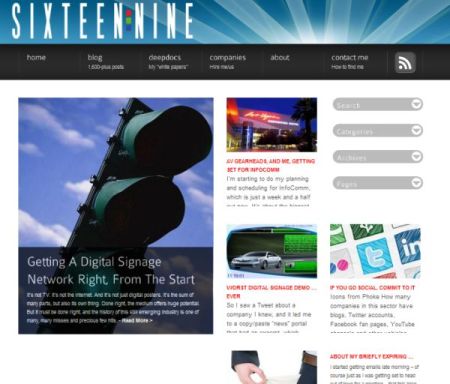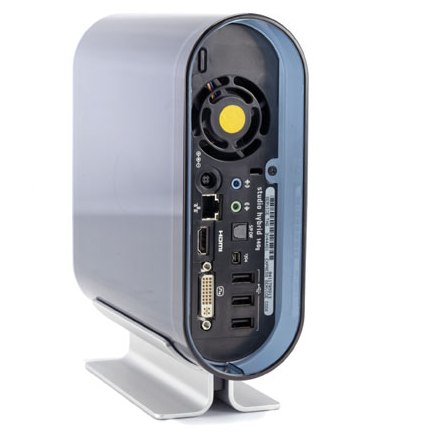
The online discussion forum Retail Wire attracts a very knowledgeable crowd — what it calls a Brain Trust — to comment on various issues of the day, including recent news that Wal-Mart is taking its in-store video network in a new direction.
This is a site requiring registration, but it’s free, and worth the few seconds it takes to capture your data.
What some industry experts have to say:
Obviously, Walmart has a lot to gain with their in-store media effectiveness, so it is no wonder they will roll out next generation, more creative in-store programs. Suppliers want to move as close to the consumer purchase decision as they possibly can, so moving general advertising dollars to in-store media with Walmart helps them and also ingratiates them with their largest retailer.
Buyers at Walmart have goals to attain, and the amount of in-store media support their suppliers purchase could well be one of their success measurements, so buyers will encourage and endorse this in-store activity.
Finally, suppliers can use these Walmart spends to help validate the specific level of investment support they provide to Walmart, so suppliers who are challenged to validate their support dollars to Walmart will have this support as an advantage when discussing P&Ls, which have always been a hot topic of discussion in planning meetings with Walmart.
Dan Nelson, CEO, Leadership Resources
It’s a smart move for Walmart to find ways to make in-store media more accountable and interactive. As marketers are moving away from TV spend (albeit slowly) there’s a great opportunity for retailers to pick up some of those above the line media dollars–if they can prove effectiveness.
The first couple of iterations of Walmart TV didn’t do a lot to distinguish in store advertising from general advertising but the promise of more interactivity and accountability make in-store media much more compelling. If there’s revenue to be captured, I think we can expect more retailers to move this way.
Lisa Bradner, senior analyst, Forrester Research
Of course, any retailer-operated advertising medium “fully financed by suppliers” is laughable on its face and questionable in its delivery. We’re all familiar with how it works. Suppliers don’t support efforts of this type willingly, but are strong-armed into paying the freight. This is followed by pricing adjustments that are eventually passed along to consumers, and a dearth of success reports for the medium in question.
On the other side of the equation, retailers have been numbingly unable for decades to convince product manufacturers that their stores are, in many ways, advertising tools superior to broadcast and print media. Retailers are chronically clumsy and ham-handed in their attempts to make this very credible case, including trying to tap into the more than $7 billion spent annually on distributing printed coupons. And brand broadcast expenditures are much, much larger. What is the best place to distribute coupons, the Sunday newspaper or a supermarket? No-brainer, right? If 70% of purchase decisions are made at the shelf, stores are the best places to communicate brand messages, right? And yet retailers haven’t made these cases because they always return to their tactic of choice: brute force.
M. Jericho Banks, Ph.D., Partner-Owner, Select Marketing LLC
It is hopeful that Wal-Mart’s in-store network would be really helpful to the customer. Let’s look at some facts about shopping at Walmart. The store is big! Some departments are easy to spot, others are obscured. How about using digital signage and interactive video to help the customer find their way to desired products…and first of all, finding out where they are in the store to start. That brings up another idea; how about a lost parents or Dad finder, similar to what theme parks do. Somewhere to sign-in if you get separated from your shopping companions.
Secondly, customers shop Walmart to save money. How about the system facilitating comparison shopping? This would be not only the cost compared to Walmart competitors, but how about bringing in Consumer Reports to tell the customers about products that are really a great value, or the cost trending of items that are becoming more expensive or reducing in price.
Not everyone shopping the aisles in Walmart, or any store for that matter, has current information on fashion trends or any idea on what goes with what. In an effort to help all of America to become fashion savvy and look good, how about information coordination, and detailing in the apparel aisles. Maybe even introduce “My Fashion Coordinator” software to allow the consumer the chance to input ergonomic particulars about their bodies, and get helpful input on a desirable fashion direction.
And this goes with my final fact; it is difficult to get help anywhere in a Walmart. So introduce a virtual store concierge who greats you when you arrive, and with motion or heat sensors, guides your through the store. I know that this may be a bit like “Minority Report,” but if that system was developed to be customer-friendly and not creepy, it would be really cool.
Understand that none of these suggestions is better than a front door greeter, a personal shopping assistant, or KNOWLEDGEABLE help available when you need it. But if not, these would be the next best things.
Jerry Gelsomino, Principal, FutureBest
A few thoughts:
1. For in-store digital media to succeed in Walmart or elsewhere, there has to be the realization that, no matter what anybody calls it, this isn’t a television network. While content is king and the reason for someone to go beyond simply noticing and actually watching what is on a digital screen, the medium is not about stopping people for extended periods of time. The environment is retail and people in that environment are on the move. They can get pretty ticked off if someone else is taking up space and interfering with the traffic flow. Messages need to be communicated quickly and be targeted to a given store’s consumers.
2. Digital images on a screen are ultimately unsatisfying even with amazing production values. Retailers need to be looking for ways to use the medium to connect consumers with the solutions available through the store or merchant’s website. Interactivity with video kiosks, especially those that tie to the back-end to recognize a consumer through a loyalty card, RFID key fob, smart phone, password, etc, will provide a level of personalization that will transition digital media from big screens blaring in a store to a tool that helps consumers get the most from their shopping experience.
3. Professionals in this space understand that digital media goes beyond a bank of screens in a consumer electronics department or a monitor offering food preparation tips in front of a fresh meat case. Stores need to start thinking in terms of other locations including store exteriors as a banner and brand-building medium, as well. Look at what Walgreens is doing in New York’s Times Square as an extreme example of another means for retailers to generate revenue and promote products and services.
4. There’s no doubt that marketers are looking more than ever to communicate with consumers in stores. Ultimately, however, the dollars that are starting to move in-store for digital signage and other merchandising tools will go right back out if some, at least vaguely, reliable source of measurement is not in place. There are a lot of companies (brands, retailers and digital tech vendors) working in the digital media space today that are focused on that very issue. It will be interesting to see what they come up with.
‘retailveteran’
The new Walmart network may have sleeker flat screens and a more elaborate audience measurement mechanism than PRISM, but it has yet to deliver the kind of behavior-based metrics that (in my opinion) would put shopper media over the top.
Despite the glowing, rectangular screens, this is not TV. Shoppers are busy people focused on a task who want to get their stuff and go. Messages that are not relevant to their mission of the moment or located away from the product in question have very low value. And measuring opportunities to see a message is a poor proxy for tracking behavior that may be influenced by the message.
That said, I am an enthusiastic advocate of shopper media. The store environment offers an outstanding opportunity to reach and influence shoppers. But framing its value in the antique conception of 1950s television advertising is worse than quaint–from the perspective of the brands themselves, it’s probably negligent.
James Tenser, Principal, VSN Strategies





